Shipping From China to Canada
Shipping from China to Canada is a complex but highly controllable process that can be simplified by choosing the right logistics solution for both individual customers and businesses. Canada has several busy ports and airports, such as Vancouver, Toronto, and Montreal, which facilitate the efficient transportation of goods. Whether it is electronics, furniture, textiles or other types of goods, China is an important source of supply for Canada.
Ubest Shipping provides one-stop logistics solutions from China to Canada, including sea freight, air freight and customs clearance services. We tailor shipping solutions to the specific needs of our customers to ensure that the goods arrive at their destination safely and efficiently. Our professional team will provide you with full support, optimize shipping time and cost, and make your international logistics smoother and worry-free.
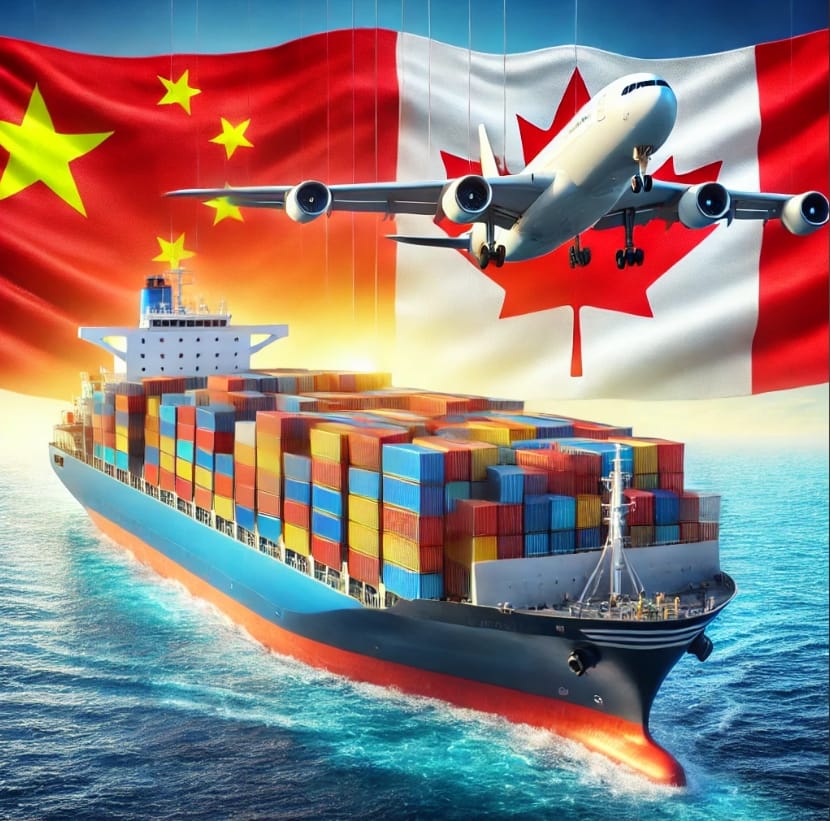
What can we do when shipping from China to Canada?
Sea freight FCL from China to Canada
- Shipping from China to Vancouver, Toronto and Montreal in Canada
- Reliable shipping schedule, on-time delivery, cheap freight
- Container Shipping: 20ft container, 40ft container, 40HQ container
Sea freight LCL from China to Canada
- Consolidate multiple shipments into one container
- Competitive freight rates based on cubic meters or tons
- Collect shipments from different suppliers in different cities
Air freight from China to Canada
- Our air freight service flies directly from major airports in China to Canada
- Quickly respond to market demand and offer competitive air freight prices
- It takes 2 to 5 days to air freight from China to Iraq
Express delivery service from China to Canada
- Express delivery from China to any city in Canada
- Super fast, 1 to 3 days to Canada
- Huge discounts on DHL, UPS, Fedex, TNT, EMS, SF Express
Door to Door Shipping from China to Canada
- Shipping from any city in China to the warehouse in the Canada
- Including Canada customs duties and taxes (DDP/DDU)
- Charged per cubic meter or per kilogram
DDP Shipping from China to Canada
- Provide one-stop service from China to Canada warehouse
- DDP service, all tariffs and taxes included, reduce cost risks.
- Flexibly choose the mode of transportation to ensure the fast and safe arrival of goods.
Content Guidelines
Guide to Shipping from China to Canada
Shipping goods from China to Canada is a complex but well-established process that involves a series of steps from choosing the right mode of transport to customs clearance. First, you need to decide whether to choose sea or air transport based on the characteristics of your goods, timeliness requirements, and budget. Sea transport is more suitable for large, low-time-sensitive goods, while air transport is suitable for high-time, small-volume goods.
Ways to ship from China to Canada:
- Air freight: This is the fastest option for shipping from China to Canada and is ideal for time-sensitive situations. It is particularly suitable for items that need to be delivered quickly, such as fresh food or expensive electronics. Although it is more expensive than other methods, it is chosen for its speed and reliability.
- Ocean freight: If you are not in a hurry but need to ship a large amount of goods, ocean freight is an affordable option from China to Canada. Ocean freight is slower but can handle large quantities of goods, making it the preferred choice for bulk shipments. Delays may occur due to weather or port issues, but ocean freight is a reliable and affordable mode of transportation.
- Express delivery: Express delivery is a fast and safe mode of transportation suitable for urgent and small-volume goods. It is faster than ocean freight and can be tracked in real time, but it costs more and has size and weight restrictions. If you are sending important items quickly, this may be your best choice.
- Door-to-Door (DDP) Service: This is the most worry-free option for shipping from China to Canada. The shipping company will take care of everything from pickup to delivery, including customs formalities. This service gives you peace of mind and convenience, but the cost may be slightly higher.
Next, the transportation of goods requires the preparation of various necessary documents, such as commercial invoices, packing lists, certificates of origin, etc. These documents are crucial for customs clearance, as Canadian customs has strict regulations on imported goods. In addition, you need to be familiar with Canada’s import regulations, including tariff rates and import license requirements for specific goods.
During the transportation process, choosing an experienced freight forwarder can greatly improve efficiency. Ubest Shipping has rich experience in international logistics and can provide customers with a one-stop transportation solution, from cargo pickup, packaging, transportation to customs clearance and last-mile delivery, to ensure that the goods arrive in Canada safely and efficiently.
Sea Freight from China to Canada
Sea freight is one of the most economical ways to transport goods from China to Canada, especially for large or heavy goods. Sea freight services usually include full container load (FCL) and less than container load (LCL). FCL is suitable for customers with large cargo volumes, while LCL is suitable for small quantities and multiple varieties of goods, which can effectively share freight costs.
Regular flights from major ports in China such as Shanghai, Ningbo, Shenzhen and Guangzhou to Vancouver, Montreal and Toronto in Canada provide stable transportation time for goods. The sea freight transportation time is usually 20 to 35 days, depending on the route, port and customs clearance efficiency.
Ubest Shipping provides customers with flexible and diverse sea freight solutions to help companies optimize transportation costs. At the same time, our services also include customs clearance support, cargo tracking and destination delivery to ensure that customers have no worries during the entire transportation process.
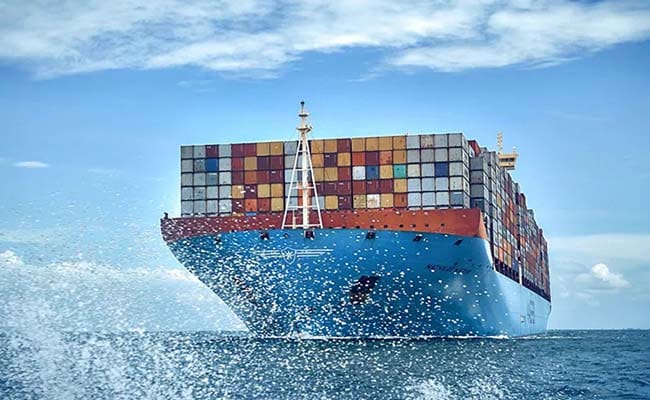
Ocean Freight from China to Canada: FCL vs LCL
How to Choose Full Container Load or LCL Freight for Ocean Freight from China to Canada ?
LCL Shipping from China to Canada
- Definition: LCL or Less Than Container Load (LCL) is a shipping method where your goods will share space with other goods within the same container. This shipping method is ideal for goods that are too small to fill an entire container.
- When to use: Choose LCL shipping between China and Canada if your goods do not exceed 13-15 CBM (Cubic Meters). This provides flexibility as it allows you to ship your goods when they are ready, rather than waiting for enough to justify the cost of a full container.
- Example: Let’s say you are a boutique fashion retailer importing unique goods from China to Canada. Your orders may be irregular and each shipment may not be enough to fill a container. In this case, using LCL shipping allows you to better manage your freight costs and inventory levels.
- Cost Impact: With LCL shipping, you only pay for the space your goods take up in the container. However, keep in mind that the per-unit shipping cost may be higher compared to FCL shipping. Still, for smaller or inconsistent shipments, the overall cost and enhanced supply chain flexibility offered by LCL shipping may still make it a more attractive option.
Full Container Load Shipping from China to Canada
- Definition: FCL or Full Container Load is a unique ocean shipping method where the cargo fills an entire container, usually 20 feet or 40 feet. It is called FCL shipping because it remains sealed and secure from origin to destination.
- When to use: Full container load shipping is the ideal shipping method for large shipments, usually over 15 cubic meters. This is because of economies of scale, making it more cost-effective to ship large shipments.
- Example: Let’s say you are shipping a large shipment of electronics from Shanghai to Canada. Considering the size and value of the shipment, choosing FCL shipping allows your shipment to fit securely in one container, reducing potential loss or damage during transportation.
- Cost Impact: In FCL shipping, you are responsible for the cost of the entire container; therefore, the cost may seem high. However, since the cost per cubic meter is lower, the cost will be lower for larger shipments. Getting a FCL shipping quote is essential to understanding your financial situation. Quotations usually include terminal handling charges at origin and destination, freight charges and possible surcharges depending on the cargo and route.
Major Shipping Ports in Canada
Port of Vancouver
- Location and Throughput: Located on the southwest coast of British Columbia, the Port of Vancouver is Canada’s largest port, handling more than 142 million tons of cargo each year, including a variety of commodities.
- Major Trading Partners and Strategic Importance: Its major trading partners include China, the United States, Japan, South Korea, and India. Its strategic location on the Pacific Rim makes it an important gateway for trade with Asia.
- Business Background: If you are looking to ship commodities such as grains, minerals, or forest products, then the Port of Vancouver should be an important consideration in your shipping strategy due to its strong cargo handling capabilities.
Port of Halifax:
- Location and Throughput: The Port of Halifax is located in Nova Scotia on the east coast of Canada. It is the fourth largest port in Canada, with a throughput of approximately 550,000 TEUs per year.
- Major Trading Partners and Strategic Importance: Major trading partners include China, Europe, the Mediterranean, and the Indian subcontinent. It is strategically important due to its location on the Great Circle Route between North America and Europe.
- Business Background: In addition to containerized cargo, if you plan to ship automotive or bulk cargo, the Port of Halifax also offers specialized facilities to meet the needs of these markets.
Port of Montreal:
- Location and Volume: Located on the St. Lawrence River in Quebec, the Port of Montreal is Canada’s second largest port, handling more than 1.6 million TEUs per year.
- Major Trading Partners and Strategic Importance: Its main trading partners are Europe and the Mediterranean, with a focus on containerized cargo. The port’s location is strategically important as it is the shortest direct route from Europe to the Midwest of North America.
- Business Background: If your business needs revolve around container shipping to and from Europe, utilizing the Port of Montreal can save shipping time and shipping costs.
Port of Prince Rupert:
- Location and Throughput: Located on the northern coast of British Columbia, the Port of Prince Rupert has the shortest shipping distance from the west coast of North America to Asia, with an annual throughput of more than 1 million TEUs.
- Major Trading Partners and Strategic Importance: Serving primarily Asia and the Americas, particularly China, Japan, and the United States, it is strategically important compared to other North American west coast ports due to its proximity to Asia.
- Business Background: If you are planning to enter the booming Asian market, the Port of Prince Rupert can provide a significant competitive advantage to your business with its shorter shipping times.
Port of Quebec:
- Location and Volume: Located at the end of the St. Lawrence River, the Port of Quebec is known for handling a wide range of cargoes. More than 25 million tons of cargo are handled annually.
- Major Trading Partners and Strategic Importance: Major trading partners include Europe, Africa, and Central America. The port is known for its deepwater facilities that are open year-round.
- Business Background: The Port of Quebec has facilities to handle a wide range of commodities, including bulk and general cargo, to meet the needs of businesses with different shipping needs.
Port of Saint John:
- Location and Volume: Located on the Bay of Fundy in New Brunswick, the Port of Saint John is Canada’s third largest port, handling more than 28 million tons of cargo annually.
- Major Trading Partners and Strategic Importance: Trades primarily with Europe, South America, and the Caribbean. Its strategic location is important due to its deepwater facilities that operate year-round and its connection to the North American rail network.
- Business Background: Given the Port of St. John’s rail connectivity and ability to handle a wide variety of cargo, it can be a significant asset for businesses seeking intermodal logistics solutions.
Air Freight from China to Canada
If your shipment is time-sensitive, air freight is undoubtedly the best choice. It usually takes only 3 to 7 days to ship from major Chinese cities such as Beijing, Shanghai and Guangzhou to Toronto, Vancouver and Calgary in Canada. The speed advantage of air freight is particularly suitable for high-value or fragile goods, such as electronic products, medical equipment and fashion apparel.
Although air freight costs are relatively high, its speed and safety make many companies willing to pay for it. For customers who want to reduce air freight costs, they can choose to ship by groupage, which can effectively share the costs by combining the goods of multiple customers.
Ubest Shipping provides professional air freight services, including cargo booking, transportation tracking, customs clearance and final delivery. We ensure that each link runs efficiently, saving customers time and energy while minimizing risks.
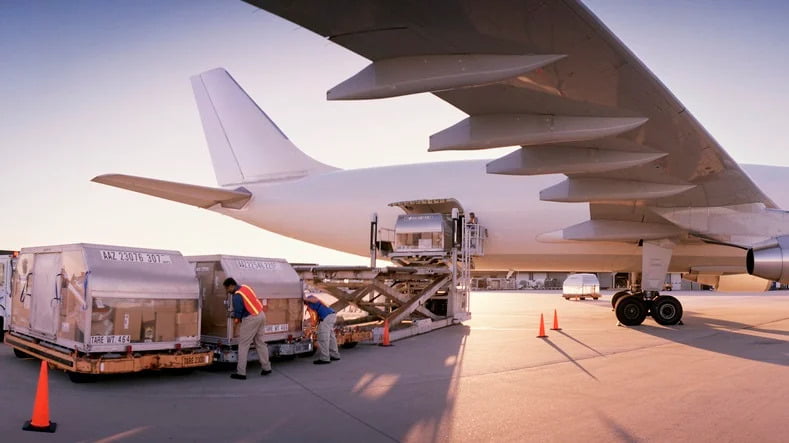
Major International Airports in Canada
Toronto Pearson International Airport
Toronto Pearson International Airport handles more than 50% of Canada’s air cargo, handling more than 669,000 metric tons of cargo annually.
If your business deals with European, Asian or US markets, shipping your cargo through Toronto Pearson Airport can take advantage of its extensive connectivity and speed up your trade time.
Vancouver International Airport
The airport handles nearly 310,000 metric tons of cargo annually.
If your business is in an industry that requires refrigeration, such as perishables or pharmaceuticals, consider Vancouver for its dedicated cooling facilities and quick access to major Asian markets.
Montreal Pierre Elliott Trudeau International Airport
Cargo Volume: The airport handles approximately 188,000 metric tons of cargo annually.
Calgary International Airport
Calgary Airport handles more than 147,000 metric tons of cargo annually.
The airport has an extensive cargo apron and dedicated cargo terminals, with integrated customs facilities. If your company places high demands on speed and efficiency, Calgary’s integrated customs and fast connections can get your goods to their destination faster.
Edmonton International Airport
Handles approximately 40,000 metric tonnes of air cargo annually. As one of Western Canada’s major airports, it offers extensive connections domestically as well as to the United States, Asia and Europe.
Shipping costs from China to Canada
Shipping costs from China to Canada will vary greatly depending on whether you choose air or sea freight. Air freight costs usually range from $5.5 to $12.5 per kilogram, while sea freight costs range from $2,800 to $4,500 for a 20-foot container. You can refer to the table below:
| Shipping Mode | Cost Range |
|---|---|
| LCL (per cubic meter) | $80 – $150 |
| FCL (20ft container) | $2,800 to $4,500 |
| FCL (40ft container) | $3,550 to $5,550 |
| Express Cost (30kg) | $15 per kilogram |
| Air Freight (100kg) | $5.5 to $12.5 per kilogram |
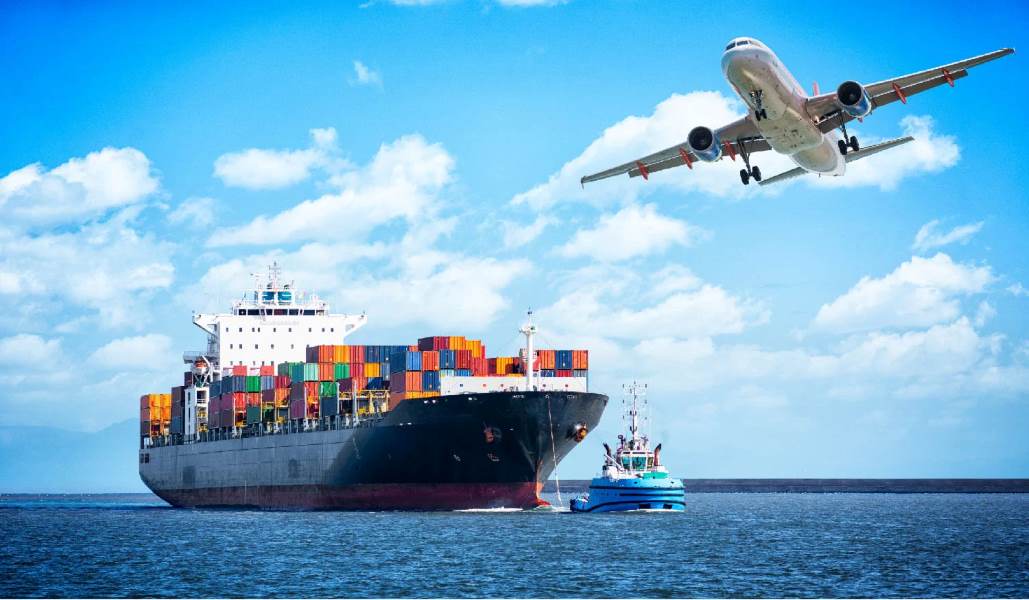
Cost of Shipping 20ft & 40ft Containers from China to Canada
The cost of shipping containers from China to Canada depends on a variety of factors, including the type of FCL you use (20ft, 40ft, 40HQ container) and market-fluctuating shipping costs. Listed below are the cheapest prices for 20ft and 40ft containers (FCL) for various goods shipped to Canada from major Chinese ports.
| Container Shipping Routes | Container Type | Sea freight rates from China to Canada |
| Shanghai, China – Canada | 20ft container FCL | Average Rates: $2850 20FT |
| 40ft container FCL | Average Rates: $3550 40FT | |
| Shenzhen, China – Canada | 20ft container FCL | Average Rates: $3050 20FT |
| 40ft container FCL | Average Rates: $4050 40FT | |
| Ningbo-Zhouhsan, China – Canada | 20ft container FCL | Average Rates: $3150 20FT |
| 40ft container FCL | Average Rates: $4250 40FT | |
| Hongkong, China – Canada | 20ft container FCL | Average Rates: $3250 20FT |
| 40ft container FCL | Average Rates: $4350 40FT | |
| Guangzhou, China – Canada | 20ft container FCL | Average Rates: $2950 20FT |
| 40ft container FCL | Average Rates: $3950 40FT | |
| Qingdao, China – Canada | 20ft container FCL | Average Rates: $3350 20FT |
| 40ft container FCL | Average Rates: $4550 40FT | |
| Tianjin, China – Canada | 20ft container FCL | Average Rates: $3550 20FT |
| 40ft container FCL | Average Rates: $4550 40FT | |
| Dalian, China – Canada | 20ft container FCL | Average Rates: $3650 20FT |
| 40ft container FCL | Average Rates: $4850 40FT | |
| Xiamen, China – Canada | 20ft container FCL | Average Rates: $3200 20FT |
| 40ft container FCL | Average Rates: $4100 40FT | |
| Yingkou, China – Canada | 20ft container FCL | Average Rates: $3250 20FT |
| 40ft container FCL | Average Rates: $4250 40FT |
Cost of air freight from China to Canada
The cost of air freight from China to Canada ranges from $4 to $12 per kg, depending on a variety of factors. Actual rates may fluctuate depending on factors such as the exact departure and arrival airports, package size, weight, and nature of the cargo.
| Weight Range (KG) | Air Service Type | Average Rate per KG (USD) |
|---|---|---|
| 30 | Express Air Freight | $10 – $18 |
| 100 | Standard Air Freight | $5 – $12 |
| 300 | Standard Air Freight | $4.5 – $10 |
| 500 | Standard Air Freight | $4 – $7 |
Cost of air freight from China to Canada 100kg major city routes:
| Route | Standard Air Freight (USD/kg) | Express Air Freight (USD/kg) |
|---|---|---|
| Shanghai to Toronto | $5.50 | $8.00 |
| Guangzhou to Vancouver | $5.65 | $8.20 |
| Beijing to Montreal | $5.90 | $8.50 |
| Shenzhen to Calgary | $5.25 | $8.75 |
How to calculate the cost of DDP air freight from China to Canada
Suppose your cargo is 300 kg and 3 cubic meters. Your freight forwarder gives you an airport-to-airport price of $5/kg. Then you can calculate the air freight as follows:
Volume weight = 3*10⁶cm³/6000=500kg
Volume weight > actual weight
So the cargo will be charged according to volume weight
Air freight cost = $5/kg*500kg=$2,550
If you want DDP air freight from China to Canada, your freight forwarder quotes you $9/kg (all-inclusive price):
DDP air freight cost = $9/kg * 500kg = $4500
How long does it take to ship from China to Canada?
Shipping times from China to Canada vary depending on the method used. Ocean freight is expected to take 30 to 45 days to ship. In contrast, air freight is much faster, usually arriving in 3 to 7 days. But this is not set in stone. Shipping times are affected by factors such as the port used, weight, and the nature of the goods being shipped. To get a customized quote that takes these variables into account, it is best to contact a freight forwarder.
| Shipping Method | Shipping Time From China to Canada |
|---|---|
| Sea Freight (FCL & LCL) | 30-45 days |
| Air Freight | 3-7 days |
| Express Shipping | 2-5 days |
| Door to Door Shipping | 40–50 days |
Ocean container shipping time from China to Canada
Container shipping time from Chinese ports to Canadian ports ranges from 28 to 43 days.
| From (China) | To (Canada) | Average Shipping Time |
| Port of Shanghai | Port of Vancouver | 28 days |
| Port of Ningbo | Port of Prince Rupert | 32 days |
| Port of Shenzhen | Port of Montreal | 30 days |
| Port of Hong Kong | Port of Montreal | 33 days |
Door to Door Shipping from China to Canada
Door to Door service is an integrated shipping solution where the logistics provider takes care of the entire process from origin (your supplier’s location in China) to final destination (your address in Canada). This service includes picking up the goods, managing the transportation (air or ocean), handling customs clearance, and delivering the goods to your door.
Door to Door service typically includes:
- Pickup: Collecting the goods from the supplier or manufacturer in China.
- Transportation: Coordinating inland transportation within China and then coordinating international transportation (air or ocean) to Canada.
- Customs Clearance: Handling all necessary customs documents and formalities at both the origin and destination.
- Delivery: Transporting the goods from a Canadian port or airport to the consignee’s address.
When choosing a door to door service, businesses can choose between DDU and DDP terms:
- DDU (Delivered Duty Unpaid): Under DDU terms, the seller is responsible for shipping the goods to the buyer’s location, but the buyer is responsible for paying import duties, taxes, and any additional customs-related fees when the goods arrive.
DDP (Delivered Duty Paid): Under DDP terms, the seller bears all costs and risks of shipping the goods, including import duties, taxes, and customs clearance. This option provides a worry-free experience for buyers.
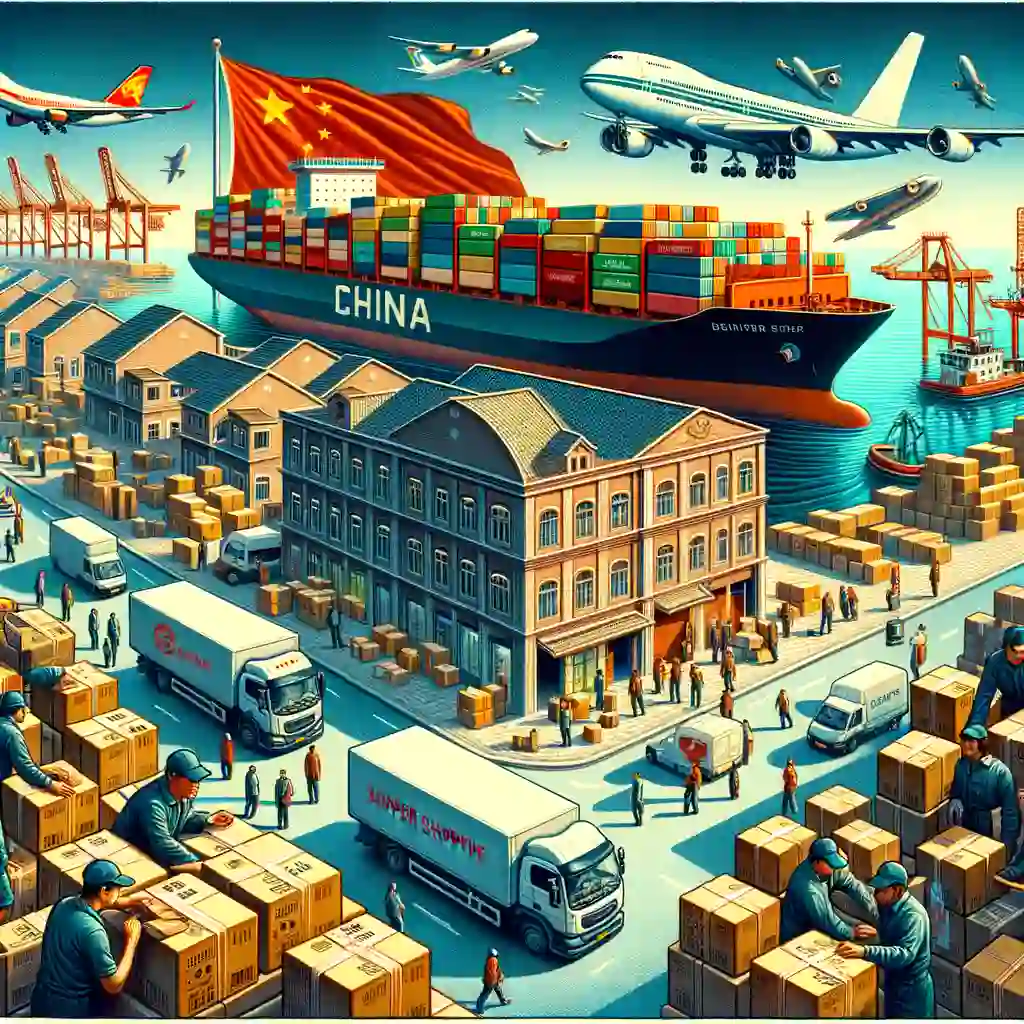
DDP Shipping from China to Canada
DDP (Delivery Duty Paid) is one of the international trade terms, which means that the seller delivers the goods at the buyer’s designated location and bears all costs and risks, including transportation costs, insurance premiums, import duties and taxes, etc. Under DDP conditions, the seller is responsible for all logistics and costs from the place of departure (such as China) to the final destination.
DDP Shipping Process from China to Canada
- Contract Signing: The buyer and seller confirm the use of DDP terms and sign the contract.
- Shipping Arrangement: The seller chooses an appropriate mode of transportation (such as sea or air) and bears all transportation costs and risks.
- Export Customs Clearance: The seller handles export customs clearance procedures in China.
- International Transportation: The goods are transported to Canada by sea or air.
- Import Customs Clearance: The seller handles import customs clearance procedures in Canada and pays all duties and VAT.
- Final Delivery: The seller delivers the goods to the final destination specified by the buyer.
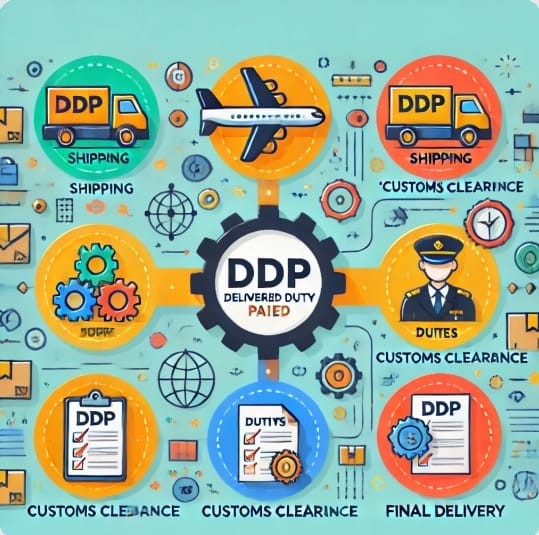
Process of shipping from China to Amazon FBA Canada
Select products and suppliers
Choose the right products: Consider market demand and competition.
Find reliable suppliers: Find suppliers through platforms such as Alibaba and AliExpress, and conduct due diligence.
Prepare goods
Quality inspection: Make sure the products meet quality standards.
Packaging and labeling: Pack and label according to the requirements of Amazon FBA.
Choose a shipping method
Choose based on cost and time: Choose the right shipping method from China to Canada according to your needs.
Transportation and customs clearance
Arrange transportation: Contact the freight forwarding company to arrange transportation.
Customs clearance procedures: Prepare and submit necessary customs clearance documents.
Send to Amazon FBA warehouse
Appointment for warehousing: Appointment for Amazon FBA warehouse warehousing time in advance
Warehouse inspection: After the goods arrive at the FBA warehouse, they will be inspected and put into storage.
Learn more: Amazon FBA Shipping from China
How to calculate duties and taxes for imports from China to Canada?
Calculating duties and taxes for imports from China to Canada involves several steps, mainly including determining the category of goods, calculating the amount of duties, VAT and other fees. The following are detailed calculation steps and some practical tips.
1. Determine the HS code of the goods
Each imported goods has an HS code (customs code), which is an international standard code used to classify goods. This code determines the tariff rate and is the first step in calculating tariffs. You can find the HS code of the goods by consulting the Canadian International Trade Commission (USITC) or relevant customs websites.
2. Find the tariff rate
After using the HS code, you can look up the tariff rate in the tariff database of the Canadian Customs and Border Protection (CBP) . Different goods have different tariff rates. Some goods may enjoy tariff exemptions or preferential rates, while others may face additional anti-dumping or countervailing duties. Pay special attention to additional tariffs or trade policy restrictions imposed on Chinese imports, especially in the current trade environment.
| Product Category | HS Code | Duty Rate | VAT Rate |
|---|---|---|---|
| Electronics | 8504.40 | 0% | 5% |
| Clothing | 6204.62 | 18% | 5% |
| Toys | 9503.00 | 0% | 5% |
| Furniture | 9403.60 | 9.5% | 5% |
| Food Products | 1006.30 | 15% | 5% |
3. Calculate the amount of tariffs
Tariffs are usually calculated based on the **CIF** of imported goods, which includes the ex-factory price of the goods, transportation costs, insurance costs, etc. The calculation formula is:
Tariff amount = CIF × tariff rate
For example, the CIF price of a product imported from China to Canada is $1,000, and the applicable tariff rate is 10%. The tariff amount is: $1,000 × 10% = $100
4. Value-added tax and other fees
Although Canada does not have a national value-added tax (VAT), other fees may be involved when importing:
Anti-dumping duties (AD) and countervailing duties (CVD): If your goods are determined by Canada to be unfairly subsidized or sold at dumped prices, these taxes may be imposed. The tax rate and calculation method depend on the goods and policies.
Port service fees: After the goods arrive at the Canadian port, there may be other service fees such as unloading fees and storage fees.
5. Calculate total taxes and fees
Total taxes and fees are the sum of tariffs, anti-dumping duties, countervailing duties, etc. The formula is:
Total taxes and fees = tariff amount + other related taxes and fees
Please be sure to prepare all necessary documents such as commercial invoices, packing lists, certificates of origin, etc. before customs clearance to ensure correct calculations and avoid customs clearance delays.
Customs clearance documents for shipping from China to Canada
Goods from China to Canada must go through customs clearance, which is usually completed within 1-3 days. The customs clearance process requires a series of documents to ensure that the goods pass through Canadian customs smoothly. The following are the main customs clearance documents for shipping from China to Canada:
- Commercial Invoice: A detailed invoice provided by the seller that lists the value of the goods.
- Bill of Lading or Air Waybill: Proof of shipment provided by the carrier.
- Packing List: A comprehensive list that details the contents of the goods.
- Certificate of Origin: A document that proves the country of origin of the goods.
- Import License: Certain restricted or regulated items require an import license.
Best Freight Forwarder from China to Canada
In international logistics, choosing a professional freight forwarder can save a lot of time and cost for enterprises. As a leading logistics service provider in China, Ubest Shipping provides customers with safe, efficient and flexible transportation services with years of industry experience and extensive global network.
We not only have a logistics network covering China and Canada, but also provide a full range of customized logistics services, including sea freight, air freight, warehousing, customs clearance and door-to-door services. No matter what type of goods you have, we can tailor the best transportation plan for you.
Choosing Ubest Shipping, you can not only enjoy a transparent fee structure and high-quality customer support, but also ensure the safe and efficient flow of goods around the world. Let us help you simplify the transportation process and improve the competitiveness of your business.
FAQ: Shipping from China to Canada
Shipping time mainly depends on the mode of transportation you choose. Sea freight from China to Canada usually takes about 20 to 30 days, depending on the departure port (such as Shanghai, Ningbo or Guangzhou) and the destination port (such as Vancouver, Montreal or Toronto). Air freight is much faster, taking about 3 to 7 days, but the cost is higher.
Sea freight is suitable for bulk goods or less urgent transportation, usually with lower costs but longer time. Sea freight from China to Canada is mainly transported by container, and you can choose full container load (FCL) or less than container load (LCL). Air freight is suitable for urgent goods, with shorter transportation time but higher costs. You can choose the appropriate mode of transportation according to the urgency of the goods and your budget.
When shipping to Canada, you need to prepare a series of customs clearance documents, including commercial invoices, packing lists, shipping documents (such as bills of lading or air waybills), and necessary import licenses. The specific requirements depend on the type and value of the goods. It is recommended to consult the customs clearance agent in advance to ensure that the documents are complete.
The freight is calculated based on the weight, volume and mode of transportation of the goods. When shipping by sea, it is usually charged by volume or weight; when shipping by air, it is calculated by the actual weight or volume weight, whichever is heavier. In addition, the distance between the port of departure and the port of destination, whether insurance is selected, and whether additional services (such as door-to-door service) are required will also affect the total freight cost.
Yes, we provide door-to-door logistics services. During the transportation from China to Canada, we will handle all the transportation, customs clearance and final delivery links to ensure that your goods are delivered to the destination safely and quickly without you having to worry about any problems along the way.
Yes, we provide transportation insurance to protect your goods from the risk of damage or loss during transportation. You can choose a suitable insurance plan based on the value of the goods. We recommend insuring high-value items to minimize potential risks.
Yes, all shipments shipped through Ubest Shipping can be tracked in real time. We provide a convenient online tracking system, you can check the shipping status and location of the goods at any time by entering the bill of lading number or waybill number, ensuring that you can understand the progress of the shipment.
